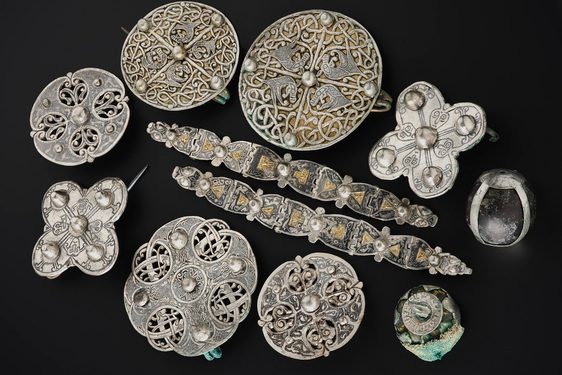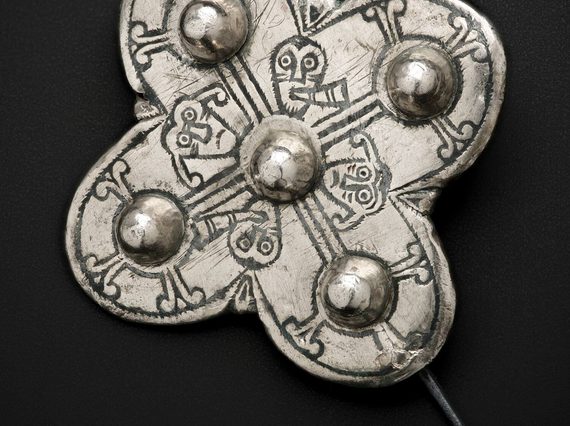
Highlights from the Galloway Hoard
News Story
The Galloway Hoard is one of the most important UK archaeological finds of the century. This incredible discovery comprises more than 100 objects, some of which are incredibly rare or unique.
There is an unparalleled range of rare materials and unusual objects in the Hoard. Here is a selection of highlights from the Hoard which offer us a glimpse into the wider world of the Viking Age.
We like to think of objects as having lives . . . Our research will trace the stories of the objects back to when and where they were made, as well as why they were buried at that time and in that place.
Dr Martin Goldberg, Principal Curator of Medieval Archaeology and History
1. Entangled arm-rings
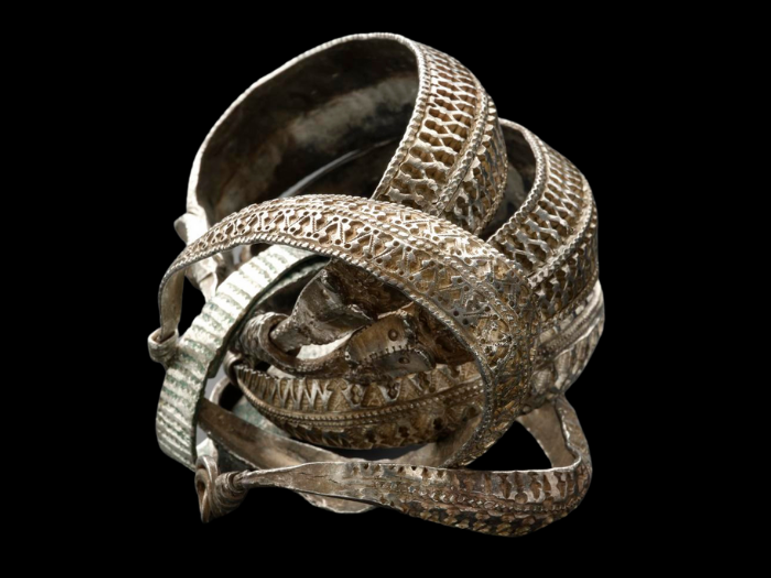
Arm-ring cluster from the Galloway Hoard, Museum reference X.2018.12.72.
In the group of silver objects, or the silver bullion, there are clues to four former owners of the Hoard. These clues include runic inscriptions and four distinct groups of arm-rings. A remarkable cluster of four arm-rings in the lower layer are different from the rest of the bullion. They are a type called a ribbon arm-ring which are elaborately decorated. The arm-rings are complete and shaped as they would have been worn. Unusually, they are all bound together tightly by one of the smaller arm-rings.
The largest is a double arm-ring, twice the size of the others, decorated with beasts. Tucked inside this cluster of arm-rings was a small wooden box containing three gold objects, including a beautiful pin in the shape of a bird.
2. Cross-shaped brooch
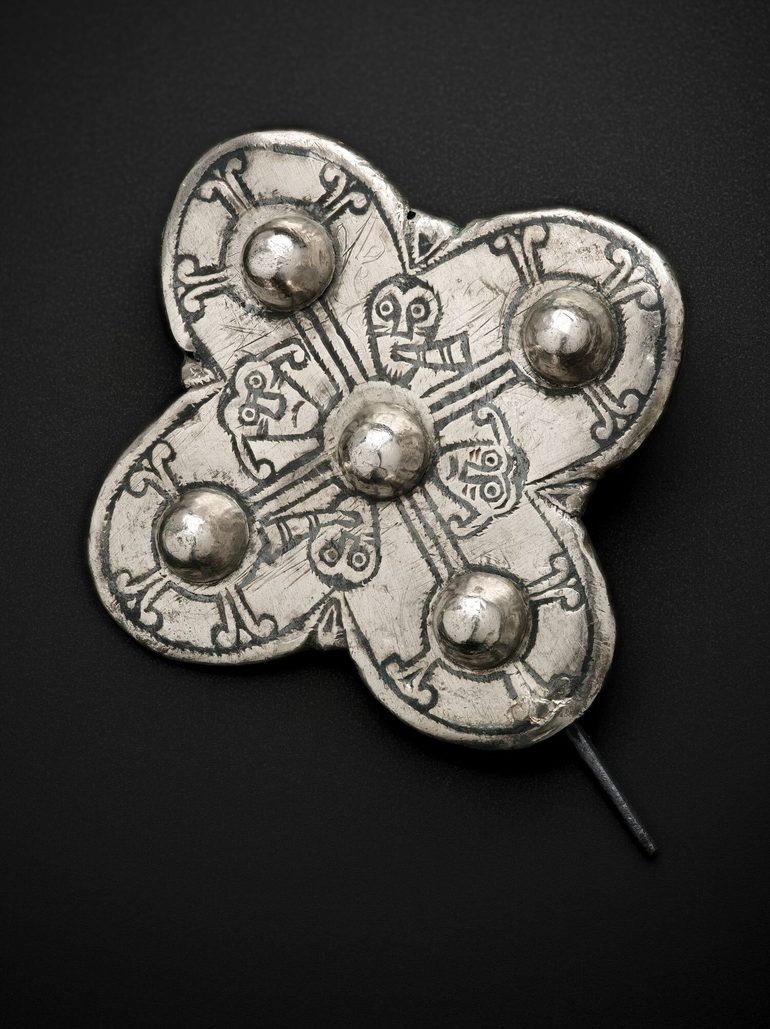
Quatrefoil brooch, Galloway Hoard, diameter 60mm. Museum reference X.2018.12.71.10.
Inside a vessel from the Hoard is the first collection of Late Anglo-Saxon brooches from Scotland. While the seven brooches, including three matching pairs, belong to a shared style, none is exactly the same.
Two unusual quatrefoil (cross-shaped) brooches are similar to the more common disc brooches in how they were made and worn. But this design is unique to the Galloway Hoard. The iconography depicts two of the five senses – sight and sound. On one, all the emphasis is on the eyes. On the other, the ears are exaggerated – their ears are ringing because blast horns are being blown.
3. Pectoral cross

Pectoral cross, Galloway Hoard, width 104mm. Museum reference X.2018.12.23.
Christian objects are unusual in Viking-age hoards. We can easily imagine this cross being robbed from a Christian cleric during a raid on a church – a classic stereotype of the Viking Age. The fine spiral chain wrapped around the cross suggests that it had been recently worn, suspended from the neck. Patient and painstaking cleaning of this cross has revealed its decoration for the first time in a thousand years.
4. Hacked and inscribed arm-ring fragment
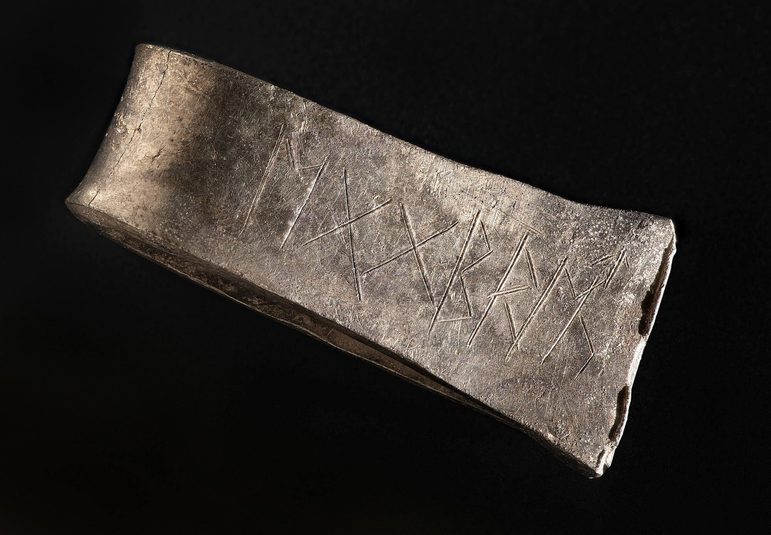
Hacked and bent silver arm-ring fragment with inscription in Anglo-Saxon runes reading EGGBRECT, length 30mm.
The Old English name, 'Egbert', was carved on a hacked arm-ring recovered from the surrounding site. The fragment was small at about three centimetres in length. To squeeze a full name into the available space, the final letter had to be superscript, like a tiny arrow in the top right corner. Such silver arm-rings are often labelled as ‘Viking’ artefacts. However, there are Anglo-Saxon runes on this object, not Scandinavian runes.
This leads us to question simple stereotypes of a Viking hoard and the identities of the people who claimed ownership over this bullion.
